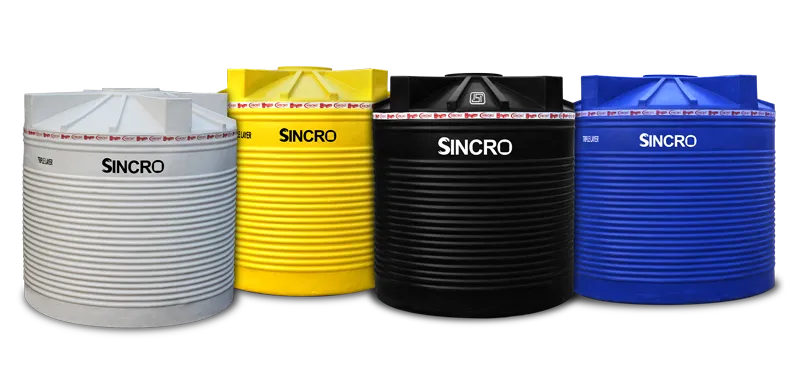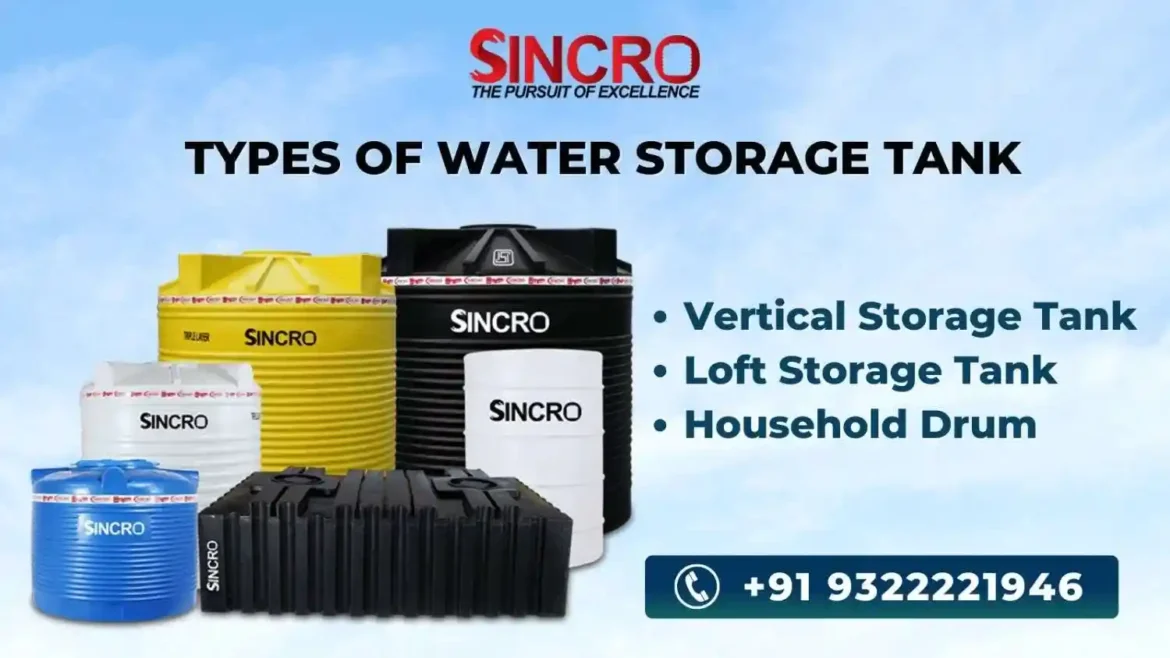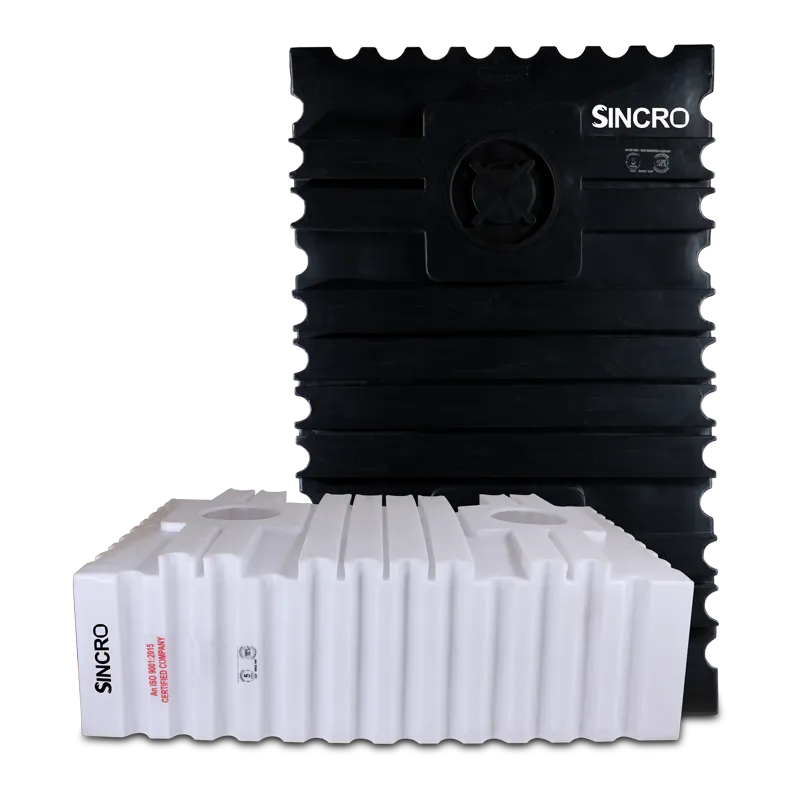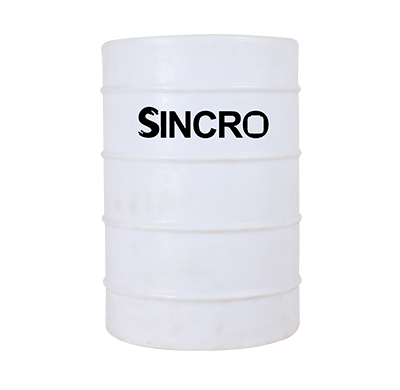Water storage tanks are essential components for storing clean water sourced from reverse osmosis systems or other treatment systems.
Pressurized storage tanks are designed to deliver water efficiently on demand, while atmospheric tanks necessitate the use of a booster pump to maintain adequate pressure.
These tanks come in diverse sizes, designs, and specifications to accommodate a variety of residential, commercial, and industrial or municipal applications.
Whether it’s for household use, commercial operations, or large-scale industrial or municipal enterprises, there is a wide array of water storage tank options available to suit different needs.

Vertical storage tanks, also known as upright tanks, are one of the most common and versatile types of water storage tanks. They are cylindrical in shape and stand vertically, making efficient use of space. These tanks are widely used in various industries, including agriculture, manufacturing, and residential areas, for storing large volumes of water.
Features
- Material – Typically made from high-density polyethylene (HDPE), which are durable and resistant to corrosion.
- Capacity – Ranges from a few hundred liters to several thousand liters, accommodating different storage needs.
- Installation – Usually installed on a solid, flat surface to ensure stability. Some models come with a base or stand for additional support.
Advantages
- Space-Efficient – Their vertical design allows them to occupy minimal ground space while maximizing storage capacity.
- Durability – Materials used are resistant to rust, UV radiation, and chemical reactions, ensuring long-term use.
- Versatility – Suitable for a wide range of applications, from residential water supply to large-scale industrial processes.
Typical Uses
- Residential – Providing water storage for homes, particularly in areas with intermittent water supply.
- Agricultural – Storing water for irrigation, livestock, and other farming activities.
- Industrial – Used in manufacturing plants for storing water used in various processes.
2. Loft Storage Tanks
Loft storage tanks are designed to be installed in the loft or attic spaces of buildings. These tanks are typically rectangular or square, allowing them to fit snugly in confined spaces. They are commonly used in residential buildings to store water for household use, particularly in regions where water pressure is a concern.
Features
- Material – Made from durable plastics like polyethylene, ensuring they are lightweight yet strong.
- Capacity – Generally smaller than vertical tanks, ranging from a few liters to several hundred liters.
- Installation – Designed for easy installation in loft spaces, often with connections for direct integration with the home’s plumbing system.
Advantages
- Space Utilization – Utilizes unused attic space, freeing up ground area for other uses.
- Consistent Water Pressure – Positioned at a height, they help maintain consistent water pressure throughout the house.
- Convenience – Easy to access for maintenance and inspection.
Typical Uses
- Residential – Providing a steady supply of water for daily household activities like bathing, cooking, and cleaning.
- Emergency Storage – Serving as a backup water supply in case of interruptions in the main water supply.
3. Household Drums
Household drums, also known as water barrels, are small, portable storage containers commonly used in homes for storing water. These drums are cylindrical and can be easily moved and handled, making them ideal for temporary water storage solutions.
Features
- Material – Typically made from plastic or metal, with plastic being more common due to its lightweight and non-corrosive properties.
- Capacity – Generally smaller, ranging from 20 liters to 200 liters, catering to short-term storage needs.
- Design – Often come with lids and spouts for easy filling and dispensing of water.
Advantages
- Portability – Easy to move and transport, making them suitable for various locations within the home.
- Affordability – Less expensive compared to larger storage tanks, making them accessible for most households.
- Versatility – Can be used for storing not just water but also other liquids, such as rainwater for gardening.
Typical Uses
- Household – Providing temporary water storage for activities like washing clothes, watering plants, and cleaning.
- Emergency Preparedness – Used for storing emergency water supplies in case of natural disasters or water outages.
- Recreational Use – Handy for outdoor activities such as camping or picnics, where a portable water supply is needed.
Conclusion
Choosing the right type of water storage tank depends on specific needs, available space, and budget. Vertical storage tanks offer large capacity and durability, making them suitable for a variety of applications.
Loft storage tanks are ideal for residential use where space efficiency and consistent water pressure are priorities. Household drums provide a convenient and affordable option for temporary and emergency water storage.
Understanding the features and benefits of each type can help in selecting the most appropriate water storage solution for any setting.
If you are in search of a place where you can find every water storage tank under one roof is Sincro. They are the manufacturers of the best quality water storage tanks made from high density polyethylene (HDPE), with double and triple layers of plastic that prevents the harsh UV radiation.
Frequently Asked Questions
1. What are the different types of water storage tanks?
Water tanks are made from different materials like concrete, stainless steel, fibreglass, and plastic. Each type has its own good points. Concrete tanks last a long time and are tough. Fiberglass tanks are light and don’t rust.
2. What are the three types of storage tanks?
The major types are ground storage, elevated, and hydropneumatic tanks. Construction materials for the various types of tanks are generally concrete and steel although some tanks for small storage volumes and special uses could be constructed of fiberglass.
3. What is a vertical storage tank?
A vertical storage tank is a cylindrical vessel developed to store chemicals or liquids vertically. They are typically utilized for chemical manufacturing, oil and gas, and water treatment systems.
4. What is domestic water storage tank?
A Water Storage Tank is a container or a mini-reservoir that is used to store the water in a measured quantity. The collected water in the tank serves many applications for both domestic and commercial purposes.
5. What is the difference between vertical and horizontal storage tanks?
Vertical tanks are most suitable for storing liquids with low to medium viscosity, like water, oil, and chemicals. Compared to horizontal tanks, they are usually taller and narrower, providing maximum storage capacity within a smaller footprint.







